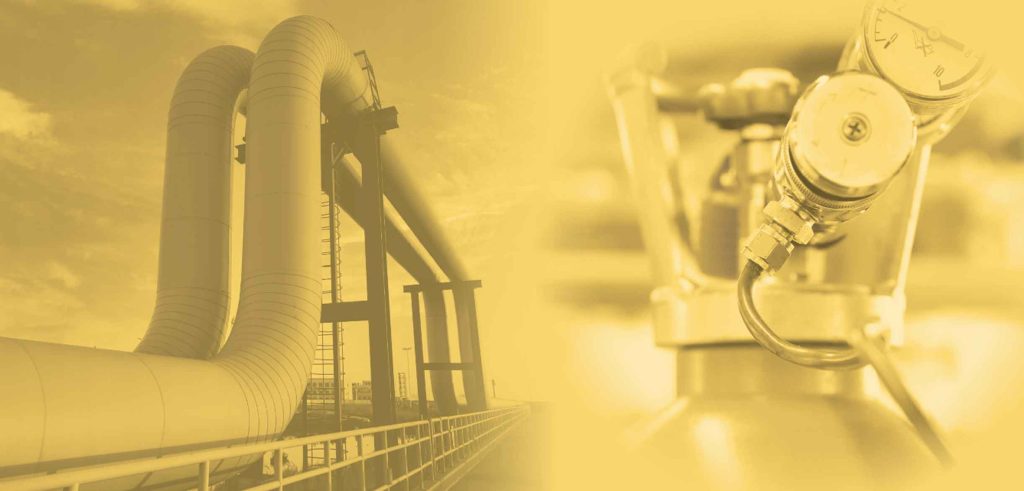How many recall riding your bike, or being dropped off by your parents at the local movie house to watch a couple hours of Saturday Morning Serials? These “thrillers,” featuring adventures of The Lone Ranger and Tonto, Dick Tracy, or Batman & Robin would occupy most of our morning. Each episode would conclude in a surrounding of high tension, guaranteeing one’s return to the theatre for the following Saturday’s continuation. It was great way for parents to get the kids out of the house, and, for the theatre’s concessionaire’s, an opportunity to sell more popcorn and candy.
Surely our Senior Statesmen; Jimmy Walker, Terry Hall, Wally Brant, Gary Armstrong, Bob McEniry, Buzz Campbell, Jack Butler, and others remember this weekly routine.
2024 may indeed return us to the atmosphere that mimics the Saturday Movies. We certainly do not need the suspense anticipating the next episode. However, we do need some continuity in dealing with the string of disruptions that we will encounter as the months pass in 2024. This series of disruptions – not necessarily all bad – are poised to get our attention, and illicit our response. All subjects that should be in our headlights moving through the new year. Media, the Trade Organization, Buying Groups, and others who share best practices should begin filling out agendas informing our colleagues of potential changes that may quickly shape our businesses. There will be plenty of opportunity. A glance at Industry calendars (page 120) reveals seven GAWDA meeting events, multiple Buying Group assemblies, some supplier sponsored seminars, and affiliated Association Meetings, (AWS/WEMCO, IOMA, CGA, etc.) Industry specific consultancies should be offering guidance, facilitation, and a menu of potential solutions to these landscape shifts, as well.
Begin with the Global Gases producers – all aligning themselves with International Energy Giants to harvest and further develop Natural Gas availability. Couple this with enthusiastic development of Hydrogen – both bulk and gaseous, to become a viable alternate energy source. Their concentration and dedication to these very necessary projects open opportunities for forward-thinking distributors to assume roles originally performed exclusively by our suppliers.
Look around us today. The most obvious is the enormous investment distributors are making in cryogenic tanker fleets. With the elimination of “Requirements Contracts,” this gives distributors the option to source liquid products from the nearest plant. Helium is high on everyone’s priority list. Recent consolidations in companies specializing in distribution of gaseous helium will encourage more distributors to invest in tube trailers and ground storage. Family-owned distributorships are ASU and CO2 Primary Stream owners and operators. Sourcing and distribution of bulk CO2 is a major industry issue. Demands, particularly seasonal, in the face of shortages connected with plant outages or maintenance shutdowns keep the continuous flow of CO2 uncertain. Independent Distributors play a major role in fulfilling user needs. Government Programs, sequestration, recovery, and reintroduction back into the supply pipeline have not been completely defined, leaving all levels of CO2 management with many questions.
Many distributors have highly sophisticated Specialty Gases operations, blending mixtures always performed by the Major players. Some have equity positions in cryo-biology storage and maintenance facilities connected to well-known Medical Research Institutions. A consortium of privately owned distributors form a partnership in other production facilities. We are seeing this today, as a few Regional Distributors are entering the hydrogen services market, albeit on a very limited basis. We will see this expand as visions, capabilities, and partnership opportunities grow. Remember, it is our skillset in storage, processing, and distribution that reserves a role for us in most circumstances.
Our hard goods business is on a parallel path. A visit to the Trade Show floors at FabTech in Chicago, or The Cutting & Welding EXPO in Essen sent a serious statement as to the role of Automation going forward. A tight skilled labor market and growing demands for increased efficiency and productivity has forced the need for automation to the forefront. Systems on display at both shows stretched from fully automated cells – complete with material handling, positioning, metals joining, cutting, grinding, buffing, and disengagement, to simple COBOT single process applications. Regardless of the complexity or simplicity, the message is evident that automation is clearly the way of the future. A quick glance at current GAWDA Membership rolls would suggest that no more than 30 distributor member companies have any presence in the Automation space. Those numbers will expand. But even smaller companies can take advantage by supplying single purpose COBOT devices, and certainly seek affiliation with a host of Automation Integrators quickly surfacing.
Also, very prominent on show floors was the presence of battery powered products. One or two major manufacturers of welding power sources even introduced battery powered welding machines. While clearly not of “production” capability, the message was clear that we can expect more battery powered equipment as technology advances. Distributors are already seeing wide expansion of battery powered small tools – grinders, polishers, drills, saws, etc. Does this suggest that, at least in a transition process, distributors’ inventory will be duplicated with models that are both electric and battery powered? What about inventories of batteries, themselves? Batteries are expensive, have shelf-life windows, are heavy, and present a significant fire hazard. Lithium-Ion battery fires are far more frequent than are widely reported, burning down major structures, with lots of serious injury and several documented deaths (see page 22). Fire Marshalls and Insurance Companies are very much aware of these fire risks which will, without doubt, lead to more regulation and insurance premium consequences. The last leg of the battery triad is disposal. Will users ask their distributors to dispose of expended or expired batteries? The books are full of horror stories related to battery disposal – a liability our distributor space does not need!
Moving on to what should be a “positive disruptor,” and part of everyone’s 2024 plan. A serious renewal of our Continuous Improvement Process. Beginning in about 2009, and moving consistently forward, our distributor segment became serious students of Continuous Improvement practices. Regardless of the Title – Six Sigma, Kaizen, Traction, or others, the philosophy behind, and implementation of these programs strengthened our industry. The benefits were clearly documented removal of wasteful and expensive operational practices, safer and more efficient activities, and beneficial associate engagement in Value Stream Mapping that far exceeded anyone’s anticipation. Everyone in the supply chain were winners as the result of these on-going programs. Costs to Serve were significantly reduced and efficiency dramatically improved.
ALONG CAME COVID – Cost considerations became secondary to protecting our associates, their families, customers, suppliers, the general public – anyone and everyone with whom we may have contact. We spent whatever money was necessary to adjust to processes and protocols that offered any form of protection from harmful exposure. Eventually, the threat subsided, and we slowly began realigning our operations. In the meantime, a LOT of waste motion and expense has crept back into our business.
It’s time to reintroduce formal CI. History confirms that it will be an extremely useful process. We will uncover unnecessary processes and costs that can be removed. We will find that new technology tools not available to us in 2009 are here to help us even more today. But the most significant win will be re-engagement of our associates in Value Stream Mapping that will unlock submerged talent and bring forward ideas from the depth of the organization that will instill pride in everyone.
Keep in mind that ESG ideological issues have the capacity to undermine the best intended CI efforts. Environmental, Social, and Governance compliance can all contribute to significantly higher costs. All these subjects deserve an exchange of serious dialogue, but the assumption that companies are presumed guilty of ignoring ESG principles until proven innocent is absolutely wrong.
Welding and Gases distributors are among the most environmentally aware group of companies anywhere. We deal with hazardous products every day and provide every safeguard possible to see that we do not damage the air, land, or streams while in the practice of our business. Likewise, owners of our small independent companies are the most empathetic, compassionate, and generous managers of employee associates, providing opportunities for growth and fairness across the entire work force. The infusion of younger, enthusiastic, technologically skilled candidates into our companies is welcomed. New vision encourages growth in all companies and is certainly beneficial. Our owners are amazing contributors to the betterment of the communities they serve. No one, with any understanding of these businesses, will ever be convinced that they are underregulated.
Electronic business relationships across our supply chain are now clearly in sight, with some distributors actively engaged in B2B relationships with their customers. More join that list with each passing month. Our distribution vertical lagged other industrial distribution segments primarily because it took additional time to integrate the uniqueness of cylinder management into our front-end interfacing platforms. With content and transaction issues resolved, and the costs of conversion manageable, an ever-growing number of distributorships will now flourish in the B2B world. It has re-established the confidence of our suppliers in the viability of our supply chain channel.
Now, prepare for the onslaught of Artificial Intelligence (AI) chaos. The subject occupies pages of White Papers, Webinars, Podcasts, and online seminars. Consultancy fee clocks are spinning at high speed as experts suggest AI will be the answer to most of one’s problems. Reactions run the gamut of the darkness of stark fear to the bright horizons of opportunity. The many facets of AI potential will never be “one size fits all.” Obviously, for those who are focused on distribution, AI generated predictive analytics can provide enormous measurable benefits across the supply chain. There will surely be other beneficial elements, but be careful and avoid becoming overwhelmed.
Headwinds are all around us. They do not negatively impact all in the same manner. Our businesses are generally regional – economic impacts, good and bad, often differ depending on business segment concentrations and geographical footprints. Certain factors are universal, such as inflation, energy costs, lending rates, and labor markets. There is a prevalence of thought that some retraction in end user activity has already surfaced. Most distributors are managing cash carefully, particularly with respect to inventory Investments and accounts receivable management. 2024 will be impacted by General Election politics. It will be difficult to determine fact from fiction as all sorts of hollow rhetoric fills our airways. We cannot be distracted. Our goals do not change in a political atmosphere. We must serve our users in ways that exceed their expectations, appreciate and reward our associates, be good stewards in our communities, and satisfy the interests of our stakeholders who have invested in our futures.
Our distribution industry lives in rare air. Our networking and sharing are truly unique. As 2024 moves forward, should we consider replicating our version of the Saturday Morning Serials? Instead of featuring the adventures of Batman and Robin, concentrate on the progression of distribution upsetting disruptions. If we are quick to identify the threat, the more rapidly we will find the solution, often an opportunity submerged in the unknown.











